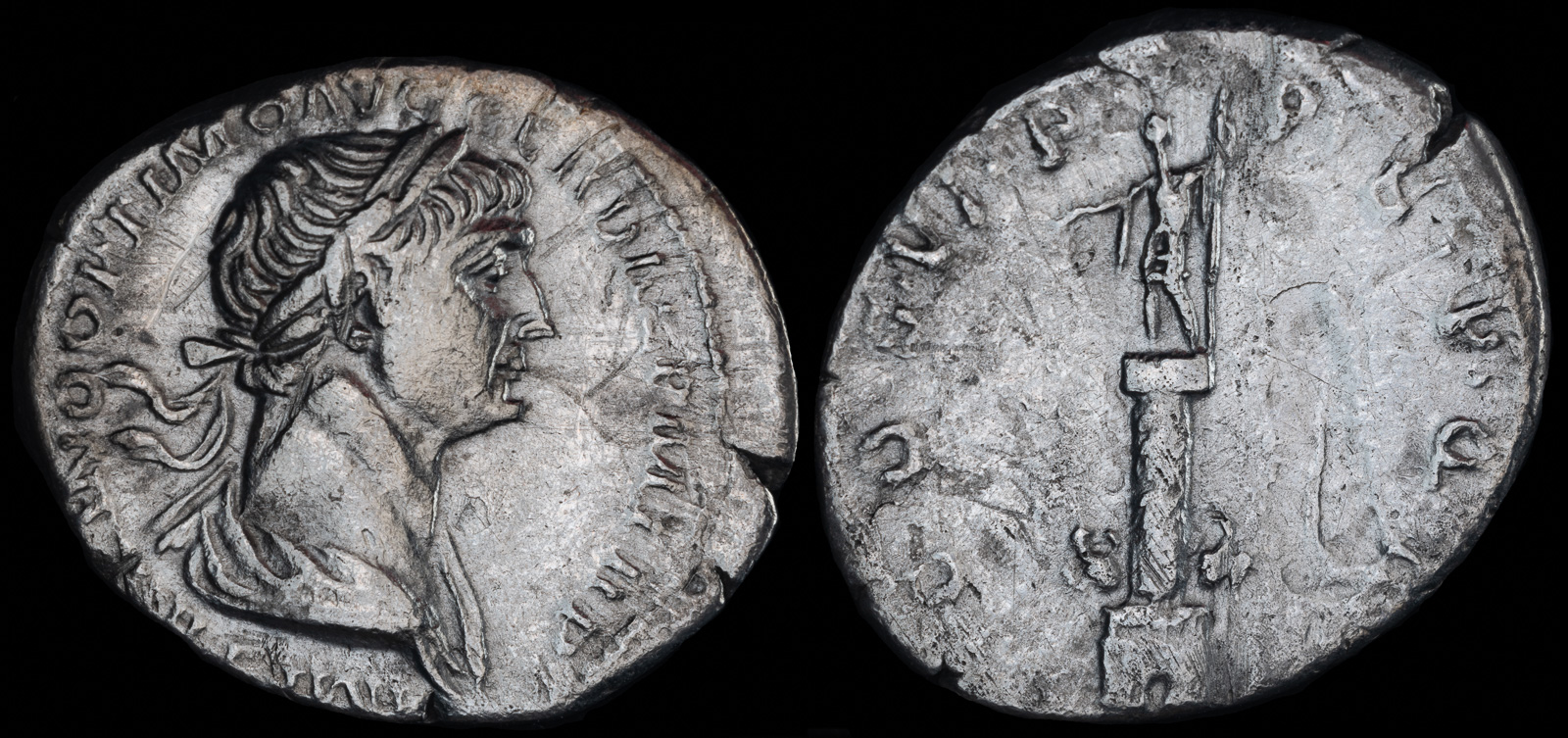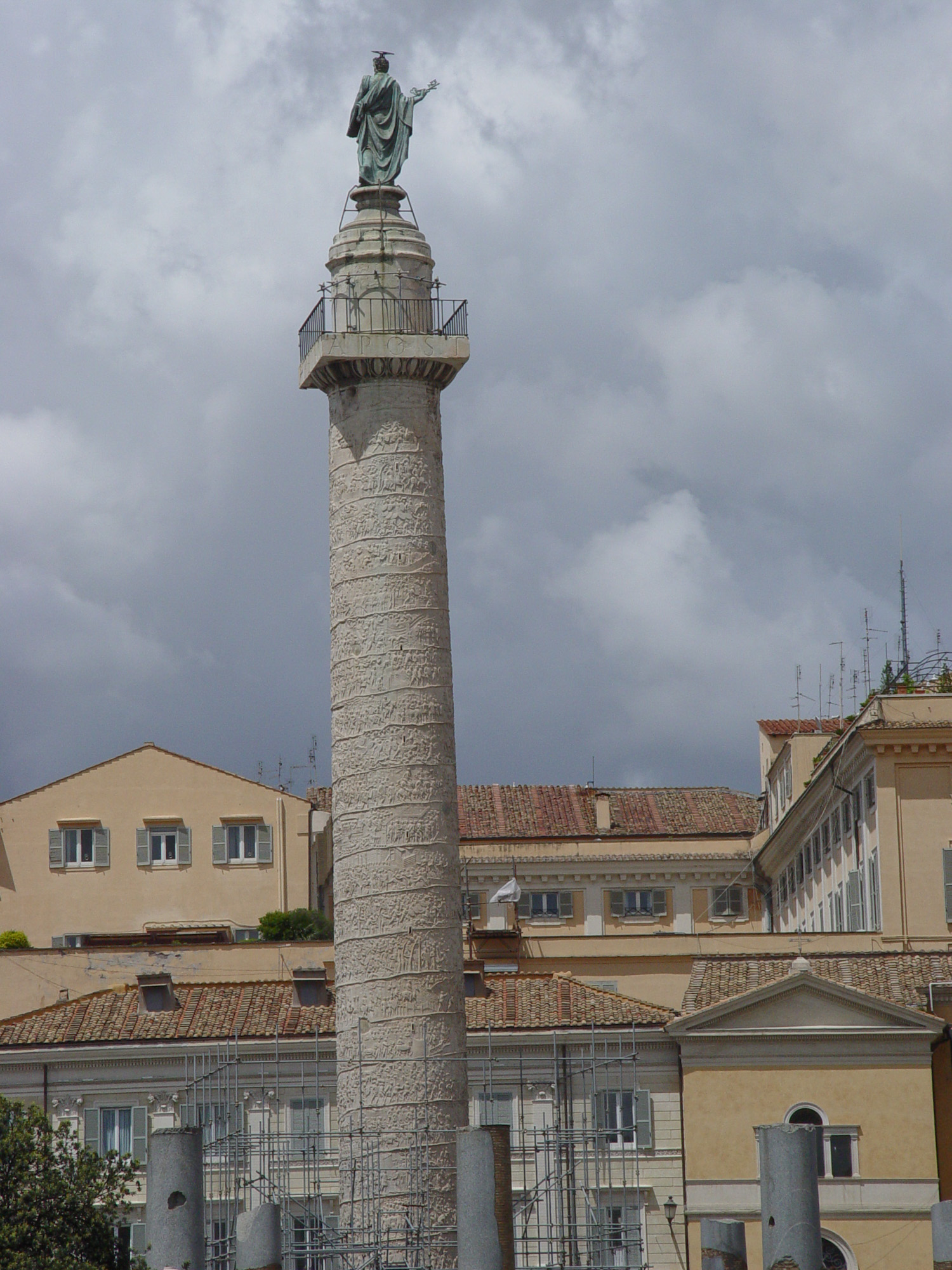
Trajan
Rome Struck 115 CE
AR Denarius 20mm 2.89g
Obv: IMP TRAIANO OPTIMO AVG GER DAC P M TR P, Laureate and draped bust right.
Rev: COS VI P P S P Q R, Trajan’s column: statue of Trajan on column set on square base surmounted by two eagles.
RIC II 307; RSC 115
Ex Akropolis Coins
This coin illustrates the original Column ofTrajan completed in 113 CE by Trajan and placed in his new Forum. At the time, it was topped with a statue ofTrajan which is depicted here. This was removed sometime during the Middle Ages and in 1587 was replace with a bronze of Saint Peter the Apostle. This likely rescued the rest of the column from destruction.
Still visible today in remarkable shape, the Column depicts 155 scenes in Trajan’s military victory over the Dacians. This occurred in two stages, with the lower half depicting the campaign of 101-102 CE and the top 105-106 CE. Most of the scenes are of the soldiers being addressed by Trajan sacrificing, and setting out on campaign and few actual fighting.
While the few actual battles was puzzling, some surmise that this was intentional, because at the time the Column was being constructedTrajanwas planning another campaign into Parthia. Such an endeavour would be extremely expensive, so the Column depicted enemies capitulating instead of fighting, thus implying that so advanced was the Roman military that enemies would immediately capitulate. The Column was painted upon completion, and must have been an amazing sight.
AfterTrajan died in 117 CE, the ashes of him and his wife Plotina were placed underneath the Column. Within it is a spiral staircase, still traversable, that leads to the platform above. For obvious reasons, it is not accessible to tourists.
At the base of the column are two eagles. Two of them are partially visible today, though they’re much smaller in comparison. From the coins, which consistently depict them, we understand they were important to the overall iconography, but we’re not exactly sure how. While two are depicted here, there were four. My suspicion is they symbolize the legions that took part. Most quote 13 legions as taking part, but only five are for sure known (VII Claudia, IIII Flavia Felix, V Macedonia, I Italica, XIII Gemina) with a sixth (I Minervia) taking part in the second campaign and commanded by Hadrian My guess is the number didn’t exactly have to line up, since four is symmetric.
I think this makes sense given that this coinage likely helped pay for the Parthian campaign. It would make sense to show honor to the military, who are being counted upon for another expensive campaign.
The statue of Trajan is depicted with a scepter (obvious) and what is believed to be a patera, which was used for pouring wine in rituals.
The column was designed by Apollodoros of Damascus, who also oversaw most of Trajan’s other building projects. He was supposedly later banished and executed by Hadrian who was offended when Apollodoros ridiculed his attempts at architecture.
Here is a photo I took of the Column in 2004, long before I became avidly interested in photography.
